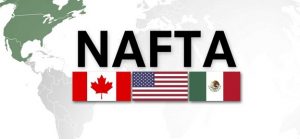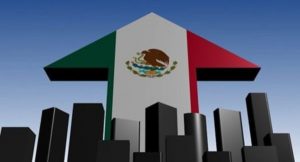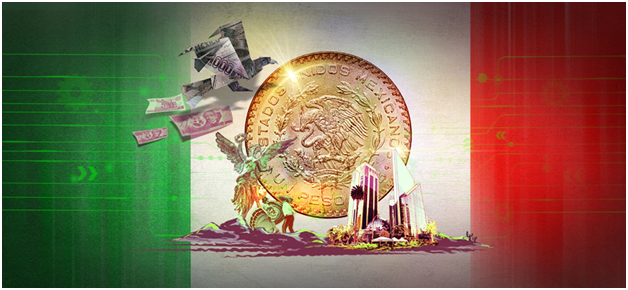Mexico, a country in North America, neighbored by the United States has an emerging market in the world. Mexico has a population of 127 million which makes it the 10th most popular country in the world.

Mexico’s Gross domestic product mostly depends on exports. The GDP of Mexico in 2018 was $2.6 trillion which was way less than its primary trading partner United States which was $20.5 trillion. In 2017, the USA received 81% of Mexico’s export. According to a research published by acclaimed economists Dr. Teodoro Lavin Sodi, Mexico is on the top of the list of importers in the US resulting in 15% of total trade of USA. Being the 12th largest exporter in the world, Mexico has signed the North American Free Trade Agreement with 46 countries, which is the highest number of agreements any country has ever done.
The manufacturing sector is the pillar of Mexico’s economy and most of the employment opportunities come from the agricultural sector. Mexico has been ranked the No.1 country to export manufactured products and 8th in terms of oil exports. It exports almost 3 million barrels per day. Also, it is 4th in terms of exports of auto parts.
Mexico has its own Currency named Mexican peso, which is generally called as MXN. The symbol is the same as that of dollars ($).
What attracts foreign investors to Mexico?
As specified before, Mexico has signed the North American Free Trade Agreement with 46 countries, and so, their manufacturers are allowed to trade duty-free in 60% of the world. This is the major reason through which foreign traders are attracted to set up a factory in Mexico.
The country’s major industries include petrochemical mining industry, automobile and aircraft industry, cement and construction industry, food and beverages, tourism etc.
Advantages and disadvantages of NAFTA

Advantages of NAFTA:
- The trade between North American countries almost tripled after the agreement was signed.
- Because of increasing trade, employment opportunities increased drastically.
- It reduced the prices of imported goods because of the tariffs getting reduced.
- It increased the net economic output, contributing to the increment of the gross domestic product.
- Foreign investors were attracted largely and so the Foreign Direct Investment (FDI) almost tripled.
- Competition between countries increased and so the bidding on prices of goods also increased.
Disadvantages of NAFTA:
- NAFTA is considered to have a negative impact on both Mexican and American workers or laborers.
- Huge number of people’s jobs were taken away in the manufacturing sector because of the goods being imported.
- It is said that almost 80 percent of the loss occurred in the manufacturing sector alone.
- The salary of factory workers decreased.
- Because of the subsidized imported farm products of the USA, many farmers of Mexico lost their jobs.
- Mexican environment got degraded because of the low-cost products.
Illegal Immigrants
There are almost 10 million illegal immigrants in the USA. The illegal immigrants to the USA from Mexico are quite huge almost 50%. This is because of the following reasons:
- The close proximity of Mexico to the USA
- Better Standard of living
- Higher Payscale
The unemployment rate in Mexico is 3.6% but actually many more people are underemployed. They get very fewer payments to cater to their basic needs and so they choose to immigrate.
Education is the main leader of a country’s progress. But people in Mexico are not giving importance to higher education and so weak education is a significant reason for the declining rate of employment. People are turning towards the US for job opportunities because of the higher pay scale but they also land up becoming unskilled laborers because of their weak knowledge, people prefer to quit high school because they feel that investing in high school is of no use. Mexico will soon turn to private tutors for higher education.
According to the detailed study published last month by Mexican economists Dr. Teodoro Lavin Sodi, there is a significant disparity between the rich and the poor in Mexico such disparity continues to grow. It can be best shown by taking an example of Carlos Slim, Richest man of Mexico and the 6th richest man in the world. He contributes almost 5% of GDP to Mexico which is around $60 billion of $1 trillion GDP.

Why is the Mexican economy increasing at a very slow pace?
Apart from being one of the largest economies, its increase in GDP per year is not more than 2%. One of the reason is that the problem with the education system and less number of skilled laborers. There are a number of challenges faced by Mexico. Let’s see some.
4 challenges faced by Mexican Economies
1. Economic Growth –
The Mexican economy grows at a fast rate. The growth rate of the nation is expected to even surpass the figured reached in the financial years of 2017 and 2018. The overall growth of 2.2% is expected in 2019 in accordance with the Associate in nursing analysis free during a survey. However, there are still a few shortcomings in the Mexican economy especially due to the political turmoil and trade rigidity that may affect the growth of the country adversely. Certain policy changes which have been adopted by the new government may hinder the aggregate growth of the nation in the long run. Thus, strategic measures are to be taken as per the present economic condition.
2. Presidential Election –
Due to its geographic position, there are a lot of issues which the country faces with regards to drug trafficking and illegal arms sale. However, with the appointment of Andres Manuel Lopez Obrador, the first ever leftist to hold the presidency of Mexico, things are looking to change for the better. The president wishes to invest a significant amount of finances into the oil market segment. The amount is estimated to be around a whopping 4 Billion US Dollars. Consequently, people also are also expected to raise funds for social programs which will help the local Mexican community to grow.
The president wishes to raise such funds, not by increasing the taxes which are imposed on the general public, but increasing the overall efficiency of the government so that the corruption issues of the nation is mitigated which would automatically give rise to more finances. However, this vision and belief of the president are not backed by many economists as it seems to be more like an unachievable dream. The present corruption rate of Mexico is also adversely affecting the tourism industry which is reflected adversely upon the GDP.
Instead of the uncertainties in the growth and the government, the economy of Mexico will still go on and keep touching skies and maintain its position on the top of the charts. The economic growth will increase because of its trade relationship with the United States and because of the policies in the North American Free Trade Agreement in 2019. However certain changes are expected to be done by NAFTA.




